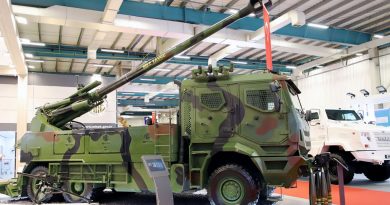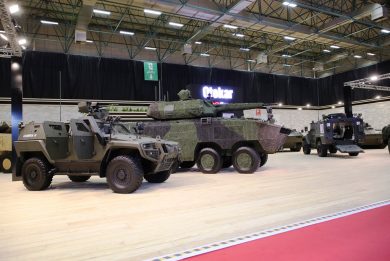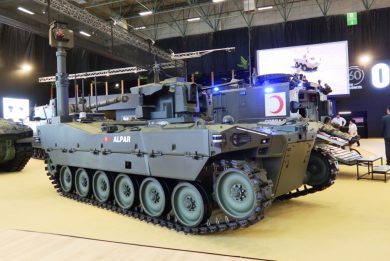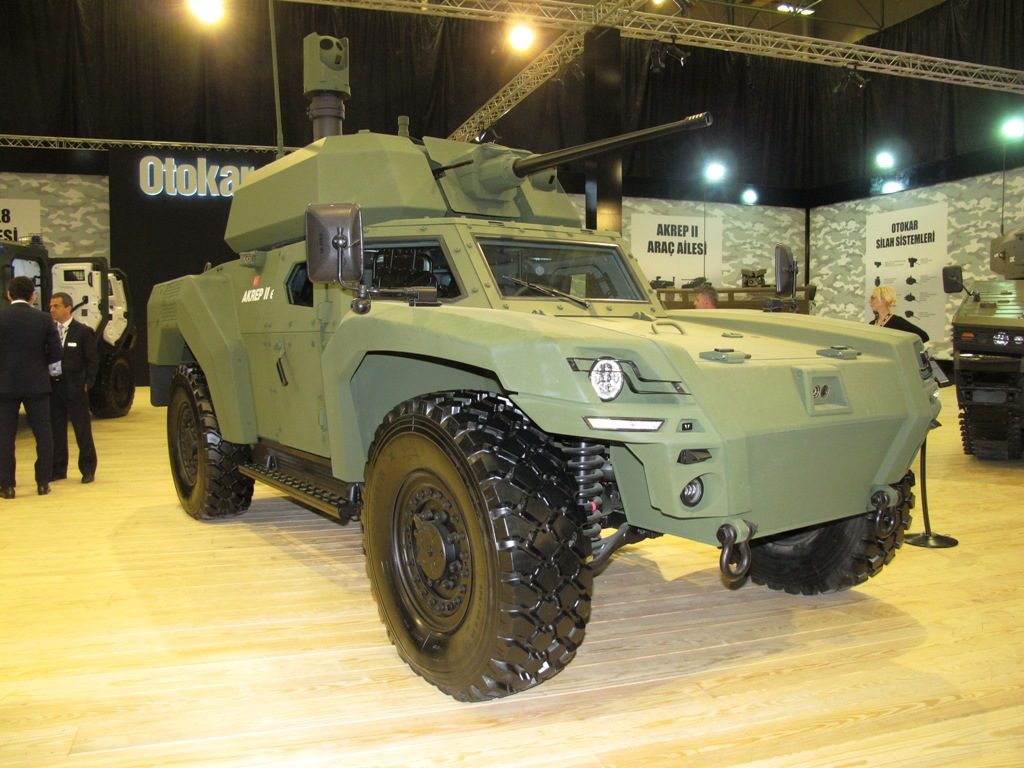
IDEF 19: Otokar’s Akrep IIe, an electric-driven recce platform
“Our first generation Akrep dated back to 1994, and it was time to field a new three-man crew lightweight reconnaissance platform, thus we developed the Akrep II, which has a very low silhouette and can be used for two kind of recce missions, by stealth, using an electro-optic sensor suite, of by fire, this vehicle being capable to accept a turret armed with a 90 mm gun,” Serdar Görgüç, Otokar General Manager, tells EDR On-Line on Day 1 of IDEF. “As acoustic signature is an important factor in reconnaissance, we decided to make the first prototype an e-demonstrator, the vehicle being powered by an all-electric solution,” he continues, explaining that a diesel version will be available in early 2020.
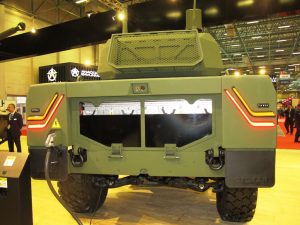
The Akrep II has the same baseline protection of the Cobra II, as well as the same ground clearance, 400 mm, however the payload allows installing add-on armour packages that will “consistently increase ballistic protection” we were told, actual protection levels remaining classified.
This was one of the key design drivers together with low acoustic signature, up to 90 mm armament and three-man seating.
However the most stringent parameter was that the Akrep II should be powered by an all-diesel, a hybrid or an all-electric system. In the current configuration the rear of the vehicle is occupied by the lithium-ion battery pack provided by Altinay; these provide power to the two electric motors, each providing 180 kW; these are installed in line at the centre of the vehicle, one providing the motion to the front wheels while the other ensures the motion of the rear ones.
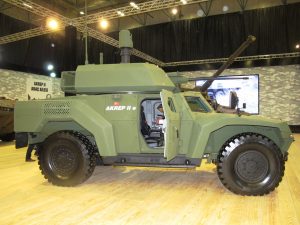
However Otokar is looking at a solution that will allow providing motion to all wheels with a single motor; this will take less room, will weigh less, and will permit an improvement in mine protection, as currently the one at the front is located between the rear seats.
“Before the exhibition we did the initial runs with the vehicle,” Akif Akfert, Otokar’s Military Vehicles Engineering Group Director explains to EDR On-Line, “and when we will be back to Sakarya we will start optimising torque versus speed, as we must manage those parameters which do not go together as in a diesel engine.” Underlining the need to improve this aspect, he also tells that in order to save power and increase range “we are learning to build more efficient electronics, and this will be another spin off of the programme.” The current battery pack provides a range of around 200 km, however the front of the vehicle is empty, thus a second package might be installed to double the range. Otokar is closely following the evolution of new technologies that might replace Li-Ion batteries consistently increasing the power density. The Akrep IIe is also used to develop new energy recovery systems both mechanical and hydraulic, something important on the all-electric vehicle but that can also be transferred to standard vehicles. Braking and steering in an all-electric vehicle are other issues to be solved: there is no engine braking, and there is no engine to build-up pressure for power steering, so compressors must be installed, something else to be solved on the technology demonstrator. “We can consider our Akrep IIe at TRL5,” Akif Akfert says, “however our maturity curve has a nice gradient, and we consider that in the next eight months we should be able to achieve a lot.”
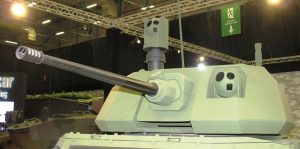
The Akrep IIe exhibited at IDEF is fitted with a Bozok remotely controlled turret armed with a 25 mm cannon. However the turret is not the standard Bozok, but a new modular version that we will detail in a further article. The vehicle can also accept a one-man medium calibre turret.
As said a diesel version should be ready for early 2020. To cope with the available space at the rear of the vehicle a “U” powerpack configuration is being developed. According to Otokar the engine output will be around 360 hp (265 kW), thus that version will have a lower power-to-weight ratio, not to speak about the much lower torque.
The Akrep II has a 13.5 GVW and is 5.5 meters long, 2.5 meters wide, the height without turret being of only 1.8 meters with a 400 mm ground clearance. It is fitted with fully independent suspensions with coil springs and features hydraulic steering. It can reach a top speed of 110 km/h, overcome a 60% slope and move on a 40% side slope, the angle of approach and departure being both 45°. A series if features are provided as standard, among them central tire inflation, run flat inserts, ABS, air conditioning, etc. Other items are proposed as option, such as the rear axle steering, which allows reducing the turning radius, CBRN filtration, self recovery winch, and numerous situational awareness and safety systems.
Photos by Paolo Valpolini

